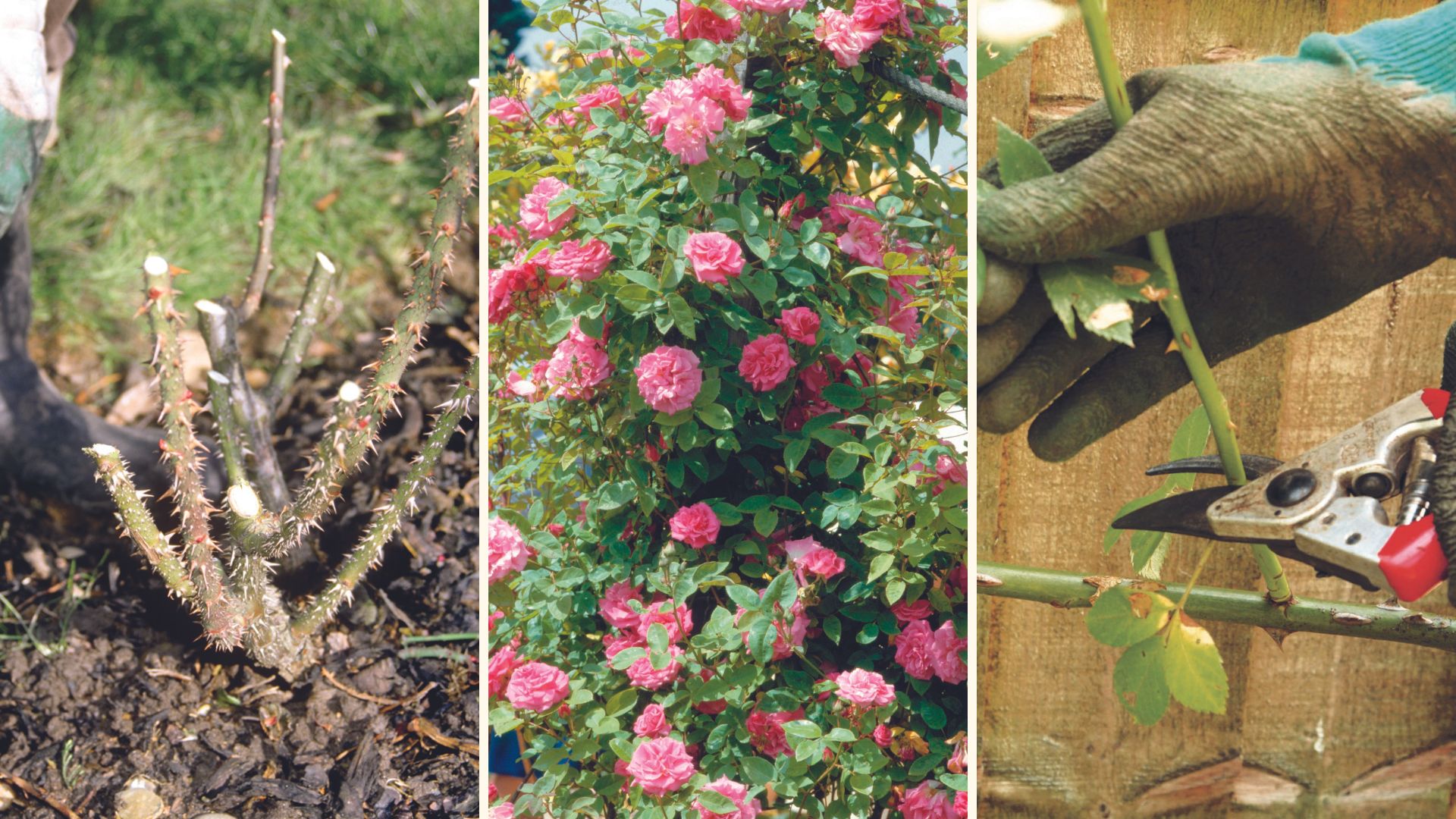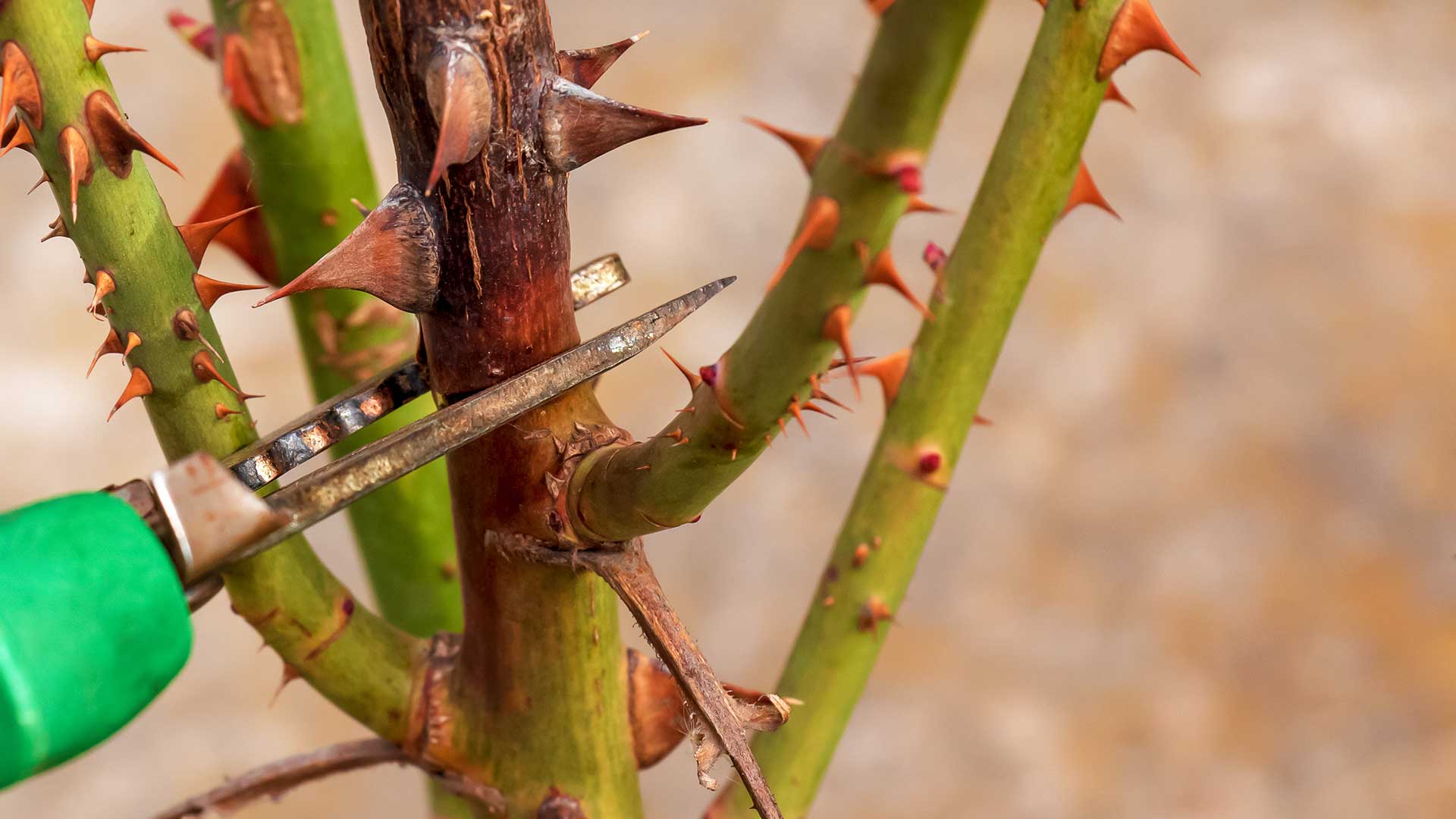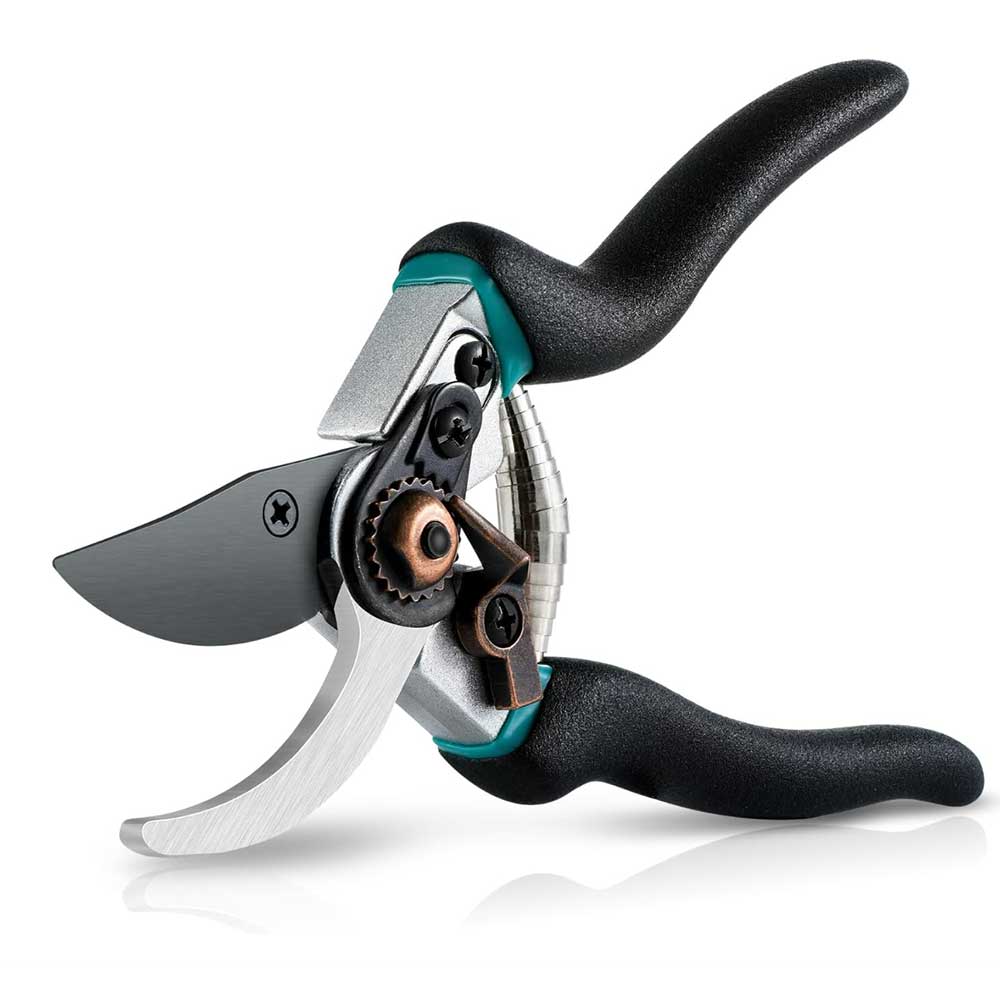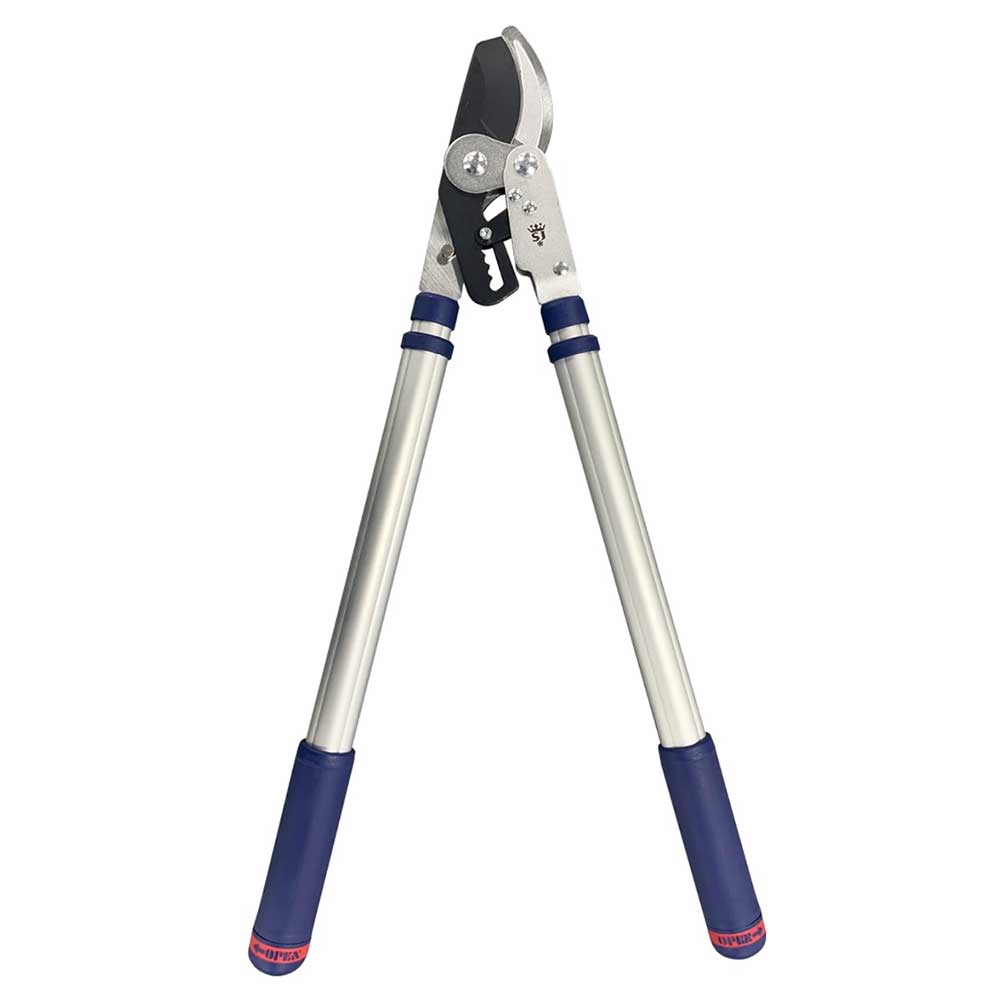How to prune roses and maximise blooming – an expert guide to pruning every type of rose
The gardening experts reveal their top tips and methods for pruning your roses


Keen to learn how to prune roses like a pro? Now is the perfect time to get to work, as these beautiful flowering plants can be pruned during late winter when growth is just resuming – which is anywhere between February and March, depending on where you're based in the UK.
It sounds counterintuitive, but pruning is actually one of the easiest ways to maximise blooming and new growth, not to mention improve your best plants’ health. In fact, taking the time to (carefully) remove all of those dead, diseased and dying stems will ensure that your roses are at their optimum best for the new growing season ahead – which is why it's key to prune these plants in February.
It's time, then, to wrap up warm and pull on your favourite pair of gardening gloves, because, just as you should protect plants from frost and get rid of moss in your lawn right about now, this is one of those winter gardening jobs that will repay your efforts a thousand times over come the summer.
How to prune roses
One of our most beloved classic cottage garden plants, the rose is one of the most popular flowers across the globe, with over 100 species and counting.
As a rule, though, almost all roses will benefit from good pruning in the late winter, which is why it's so important to master the basics of this must-do gardening task.
"Learning how to prune roses is an essential task for any gardener, because, when done correctly, it promotes healthier and more productive growth," says Steve Swanborough, a gardening expert at Henchman.

Roses should be pruned at the end of their dormancy period
"This annual task is not just about keeping the plant looking tidy, but it also ensures your roses produce an abundance of high-quality, beautiful blooms to fill your garden with colour and fragrance," he adds.
Sign up for the woman&home newsletter
Sign up to our free daily email for the latest royal and entertainment news, interesting opinion, expert advice on styling and beauty trends, and no-nonsense guides to the health and wellness questions you want answered.
What you will need
Just as the same is true of mowing your lawn or any other gardening job, it's important to have the right tools to hand before you begin pruning your roses in earnest.
To that end, then, make sure you have:
- A pair of gardening all-purpose gloves to protect your hands from thorns
- A pair of bypass pruners
- A pair of bypass loppers

RRP: £14.99 | These Gold Leaf RHS collections Chelsea Ladies Comfortable Leather Gardening Gloves are ergonomically designed padding to the palm for added comfort while pruning.

RRP: £11.99 | We recommend this sturdy pair of professional secateurs to get the job done safely, and with precision. This handy tool can be used as garden shears, branch cutters, flower cutters and tree pruning.

RRP: £34.95 | This Razorsharp 18-30" telescopic ratchet allows for powerful, progressive cutting with twist and lock extendable mechanism to tackle hard to prune branches.
When to start the job
It makes sense that, when learning how to prune roses, you should also spend some time brushing up on when to prune them, too.
"The best time to prune them is in late winter, before it starts active growth again come spring," says Steve, meaning roses are a plant to prune from January onwards. "This is because when it is dormant, it allows you to easily assess the plant to remove dead, diseased or damaged branches that may be harming the bush's overall health."
Not only does this help shape the plant, but Steve adds that it will "also encourage proper air circulation and sunlight penetration, which can help prevent fungal diseases and the spread of unwanted pests."

Good news for anyone who spends a lot of their time googling phrases such as "how to get rid of ants" and "why are my plants covered in greenfly", we think!
It's also important to "choose a day without frost or rain", says award-winning garden designer Zoe Claymore. "This will ensure that the cuts will have a better chance of healing without infection," she explains.

Zoe Claymore is a multi award-winning garden designer based in London. She focuses on creating outdoor places with emotional connection and ecological integrity for her private and commercial clients.
Step-by-step guide
If you want to get your roses ready for all of your favourite summer garden trends, it's a good idea to learn how to prune roses before you even think about touching a thorny stem with a pair of secateurs.
1. Prep your secateurs
While we're on the subject of garden tools, you'll also want to prep that same pair of secateurs before you begin pruning, too, to ensure you're doing the job properly.
"Use some good secateurs and sterilise them beforehand to reduce the chance of bringing in infection," says Zoe.
"Take care to sterilise between roses as well, especially if you've had disease in your garden," she adds. "Diluted citric acid can work well."
2. Remove any dead wood
To effectively prune your roses, Steve says that you should "start by removing any brown, dead wood using your secateurs".
As with all cuts on a rose, these should be placed no more than 5mm (¼ in) above a bud and should slope downwards away from it.
This will stop any water from collecting on the bud, and reduce your plant's chances of infection.
3. Take out any crowded branches
The next step in How To Prune Roses 101 is simple enough: you want to "take out any crossing or crowded branches, and thin or weak growth," says Steve.
Again, he says that you "should aim to make cuts half an inch above a bud at a 45-degree angle, sloping away from it".
With shrub and hybrid tea roses, Zoe says that you can "encourage an open-centred shape" by cutting to an outward-facing bud.
4. Don't be afraid to cut things back
Ideally, you'll want to cut your rose down by around a third.
"If it is a new rose, you can cut an awful lot more off in the first years, so go for it," says Zoe. "And don't forget to cut off any spindly stems that couldn't hold a flower up!"
Steve agrees, adding that your rose bush will likely be significantly smaller and appear bare after pruning, but that you shouldn’t be alarmed. "It will grow back stronger and quicker come spring!” he promises.
5. Tailor the job for climbing roses
If you're trying to figure out how to prune a climbing rose, Zoe says to remember that "you are usually pruning them over something (called training) to a desired shape, so when you are pruning you need to consider the balance of the skeleton you are making alongside removing dead, diseased or dying shoots".
"If you've inherited a climber with only one thick old stem at ground level, shorten it by up to half but no more, otherwise it may not grow back, and see how it grows."
6. Don't skimp on the mulching
When learning how to prune roses, the final step is simple: give your roses a dose of general or rose fertiliser in the spring, and be sure to mulch them generously with a thick layer of well-rotted manure or bark chippings.
It's also a good idea to consider fertilising your lawn at this time, too.
FAQs
What month do you prune roses?
All of our experts are in firm agreement: the best time to prune roses is during the late winter, when they are just resuming their growth.
"This will likely be sometime between February and March," says Zoe.
Rambling roses, however, are usually pruned in late summer, after their show of flowers and hips.
Should you cut off roses after they bloom?
Remember not to confuse pruning with deadheading (aka the removal of fading or dead flowers from plants), as the latter is best carried out in the summer after your roses have finished flowering. Just be sure not to deadhead any hip-producing roses if you want hips in the autumn/winter.
What happens if you don't prune roses?
"There are three reasons to prune roses," explains Zoe. "Firstly, for their health, which will be improved by removing dead diseased or dying parts of the plant. Secondly, for their looks: by hard pruning your rose into a balanced structure, you will approve its appearance and encourage a strong branch framework that will enable flowers to be supported. Thirdly, by pruning them you will likely encourage lots of new growth with many more flowers on!"
Now that you know how to prune roses, you can set to work making sure your garden is filled with beautiful blooms come the summertime. Good luck.

Kayleigh Dray is an experienced writer and editor within the world of digital journalism. She kicked off her career in magazines with Cosmopolitan as a news writer. Kayleigh then went on to become part of the digital editorial team at Closer, before a successful seven-year stint at Stylist, where she took command as the site’s editor and editor-at-large.
Nowadays, Kayleigh can be found freelancing for a myriad of titles including Woman & Home, along with a role at Ideal Home where she waxes lyrical about her true love: gardening. She is currently giving her own backyard a woodland-inspired makeover – and there have been whispers of a vegetable plot, too.
-
 Celebrities who overcame scandal and came back stronger than before - from Jane Fonda to Martha Stewart
Celebrities who overcame scandal and came back stronger than before - from Jane Fonda to Martha StewartScandals, controversies and fallouts can really harm a celebrity's reputation, but these stars proved there's power in putting in the work for a second shot
By Jack Slater Published
-
 Ranvir Singh’s denim midi dress is perfect for April date nights
Ranvir Singh’s denim midi dress is perfect for April date nightsYour favourite jeans will always be an easy outfit staple but denim dresses have the same comfort factor and more elegance.
By Emma Shacklock Published